Cattle lameness recently topped the list of disease syndromes of greatest concern for farmers and veterinary surgeons in the 2021 UK Ruminant Health and Welfare Group survey (Miller et al, 2021). In the same grassroots survey, digital dermatitis was identified as the single most important disease affecting cattle or sheep in the four nations of England, Scotland, Wales and Northern Ireland. Lameness is a serious issue, which costs the industry an estimated £1.2 million per day (Agriculture and Horticulture Development Board (AHDB), 2020). In addition, the reputational damage to the dairy sector is significant, and it is an animal welfare problem.
On the one hand, it would appear that little comfort can be derived from progress made over the past 30 years. A recent meta-analysis of lameness detection and prevalence studies in British dairy herds showed some evidence that lameness prevalence and lesion incidence may have actually increased (Afonso et al, 2020), although inconsistency of measuring methods hampers the comparison of results and limits our ability to see if lameness is changing over time. Whatever, the available estimates are that lameness levels are high, with circa 30% of British dairy cattle suffering from the ailment at any one time (Griffiths et al, 2018; Randall et al, 2019; Afonso et al, 2020). To put that in perspective, currently there are around 430 000 cows experiencing discomfort and pain associated with lameness within circa 8000 GB dairy herds. Criticism for this problem may certainly be levelled at the industry, and all those with an ability to make a difference.
On the other hand, there is room for optimism. According to some, the UK is the envy of the world for its research into lameness control, the tools available within the UK to address it, and the collaboration the industry shows in tackling it (Cramer, 2021). Britain is fortunate to have The Healthy Feet Programme which is evidence based and has been developed through many years of research. Farms engaging in the programme have been shown to achieve a relative reduction in lameness by an average of 22% within 12 months of starting (Atkinson and Fisher, 2013). In addition, our evidence base for managing lameness has been added to significantly in the past 10 years, in particular following the AHDB-funded lameness research partnership led by Notting-ham University.
This article seeks to outline the opportunities that we have right now to improve foot health on dairy farms. There have been many recent developments and exciting prospects to come too.
The politics of lameness
While lameness has been named as the number one issue by the UK's Ruminant Health and Welfare Group, there are other stake-holder groups that also have an important influence. One conse-quence of Brexit is that farming subsidies are being entirely over-hauled. Each devolved nation has been charged with developing their own approaches, but lameness management is included within the activities of the English, Scottish and Welsh groups. In England, the Animal Health and Welfare Pathway, which is part of the government's sustainable farming agenda, is likely to provide an opportunity for national progress for lameness reduction, for example through grant funding for infrastructure as well as professional time (Green, 2021).
The British Cattle Veterinary Association (BCVA) has been playing an important role too. Acting as a unified voice for cattle veterinary surgeons, it has been playing its part to ensure that veterinary surgeons are ready to participate in any call to arms. A significant proportion of the recent BCVA Congress scientific programme was dedicated to foot health, and a series of webinars on lameness management was presented in October 2021, which are available for members to view.
It should not be taken for granted that veterinary surgeons will be seen as the main resource for farmers wishing to improve foot health, as other professional advisers and foot trimmers may be seen by some as having a greater relevance or eagerness to engage. That veterinary surgeons are not always perceived as being at the fore-front of foot health is not unique to Britain: Wynands et al (2021) studied the perceptions of lameness management among veterinary surgeons, farmers and foot trimmers in a series of focus groups in North America; veterinary surgeons frequently voiced that they felt out of the loop. Yet farmers also identified that veterinary surgeons commonly demonstrated a lack of enthusiasm to help them in this area, or a reluctance to become engaged themselves. Certainly, a key finding of the study was that there is a need for increased effort to facilitate collaboration between farmers, trimmers and veterinary surgeons to improve lameness management.
In 2020, an AHDB-funded participatory policy development project, undertaken by the Royal Agricultural University, brought together stakeholders across the British dairy industry to consider how lameness can be reduced (Williams van Dijk, 2020). Among the policy proposals of this work, representatives from farmers, farm assurance schemes and milk processors recommended that veterinary surgeons should be leading in efforts to help farmers reduce lameness. They should do this by providing training and advice to farmers. In particular, the suggestion was that the ability to deliver the Healthy Feet Programme should be a standard requirement for all veterinary practices that provide services to dairy clients. Again, the study reported that farmers frequently perceive that their veterinary surgeon lacks either the knowledge or inclination to help them improve foot health.
The Dairy Cow Mobility Steering Group
Since the launch of the Healthy Feet Programme in 2011, DairyCo, now AHDB, have convened a stakeholder group to have oversight of lameness in the British dairy industry. This group, chaired by Professor Martin Green of Nottingham University Veterinary School, is called The Dairy Cow Mobility Steering Group (DCMSG). The dairy industry is very diverse and it is sometimes difficult to bring focus to a range of different agendas and perspectives. The group has representation from farmers, veterinary surgeons, researchers, milk processors, retailer schemes, farm assurance bodies and government agencies, which indicates a wide collaboration.
The activities have extended beyond overseeing the Healthy Feet Programme, and are summarised by its current remit statement: ‘The main focus of DCMSG from 2020 to 2025 is to develop and empower the delivery of a unified, nationwide lameness strategy for the GB cattle industry.’
While there is consensus that foot health needs to be better, it is still necessary to co-ordinate and effect opinion on a wide range of foot-related topics including:
- Paraprofessionals and the veterinary-led team
- The Healthy Feet Programme and Healthy Feet Lite
- New innovations, such as the AHDB lameness App, and new methods of lameness detection
- Qualifications and quality control (for example, in professional hoof trimming)
- The Register of Mobility Scorers (RoMS) and data collection
- Horizon scanning for new research areas and any isolated industry initiatives.
If the industry can speak with one voice, it has a better chance of seizing any opportunities that changes to the UK Agricultural Policy might bring, and the accompanying alterations to farm sub-sidies. Probably more important than chasing funding, however, comes the chance to create a UK dairy industry that is more sustainable through better foot health. The strategic relevance of better foot health can be summarised as:
- Fewer economic losses
- Improving production efficiency and reducing pressure on staff time resources
- Negating the poor welfare implications of lameness, particularly chronic lameness
- Protecting industry image and reputation, in the eyes of the consumer
- Acting on a responsibility to reduce reliance on antibiotic use.
The Healthy Feet Programme and Healthy Feet Lite
The AHDB Healthy Feet Programme was launched in 2011, and evolved from the Tubney Trust funded Healthy Feet Project, which was carried out at Bristol University between 2006 and 2010. It is a planned approach to foot health management, tailored to individual farms, using a risk assessment and facilitated by trained mobility mentors. Mobility mentors are mainly veterinary surgeons, but include some professional foot trimmers.
There are many skills that mobility mentors must have in order to deliver the Healthy Feet Programme successfully (Figure 1). The training covers coaching, facilitation and mentoring skills, as well as technical aspects of lameness management; both elements are important. Research has demonstrated repeatedly that to achieve low lameness prevalence is more complex than simply possessing the right knowledge (Leach et al, 2010; Dutton-Regester et al, 2019). Atkinson and Fisher (2013) found that the single most important success factor for low lameness prevalence within 45 dairy herds in England was a ‘can-do’ attitude of the farmer, otherwise expressed as having a strong internal locus of control (Rotter, 1966). The Healthy Feet Programme, and the mobility mentor training which underpins its delivery, has been designed to help farmers build their own self-efficacy in order to become more effective (Bandura, 1982). In other words, it has been designed to foster a can-do attitude so that targeted changes will be made to improve foot health.
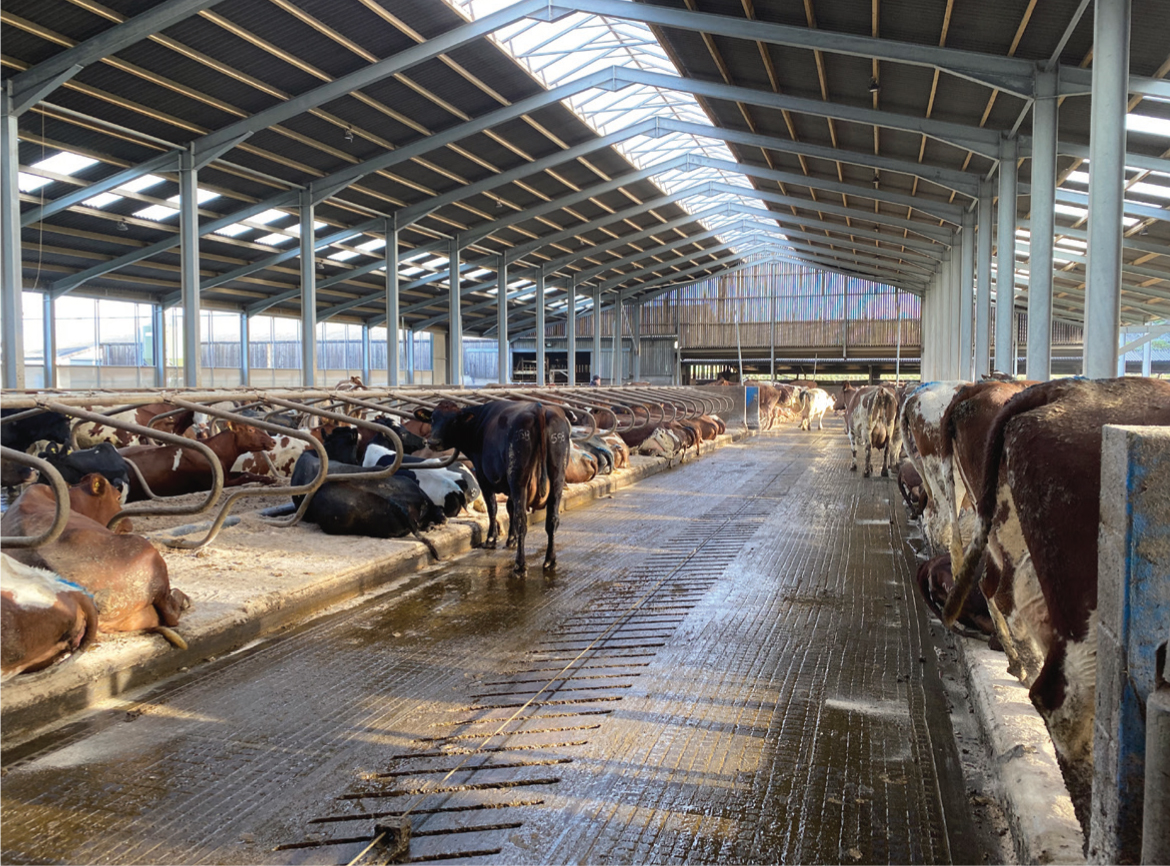
Indeed, the Healthy Feet Programme has been demonstrated to be effective in improving foot health. A study in North West England, following 24 farms that undertook the Healthy Feet Programme with their own veterinary surgeons found that all participating farmers thought it was beneficial, and there was a mean 3:1 return on investment within the first year (Atkinson and Fisher, 2013). However, the benefits have so far reached only a small proportion of the national dairy cow population and anecdotally some mobility mentors have struggled to sell the benefits of the programme to their clients.
To help address the hurdles, the Healthy Feet Programme has been improved during 2020/21 in four strategic areas:
- Greater support for the network of mobility mentors, including a programme of continuing professional development (CPD) and regular newsletters
- New opportunities for others to become a mobility mentor, including via a modular training route offered by BCVA
- The development of Healthy Feet Lite, which is a quicker and simpler intervention. This should reduce the barrier for both farmers and mobility mentors to take the first step
- The development of a framework for Healthy Feet Programme farmer-led action groups, facilitated by mobility mentors. This is recognising that farmers often prefer to learn from each other's experiences rather than didactic teaching.
The Healthy Feet Programme and Healthy Feet Lite both provide a framework by which suitably trained veterinary surgeons can help farmers reduce lameness prevalence. The current network of approximately 180 trained mobility mentors are an important vanguard in our efforts to improve foot health on dairy farms (Figure 2).
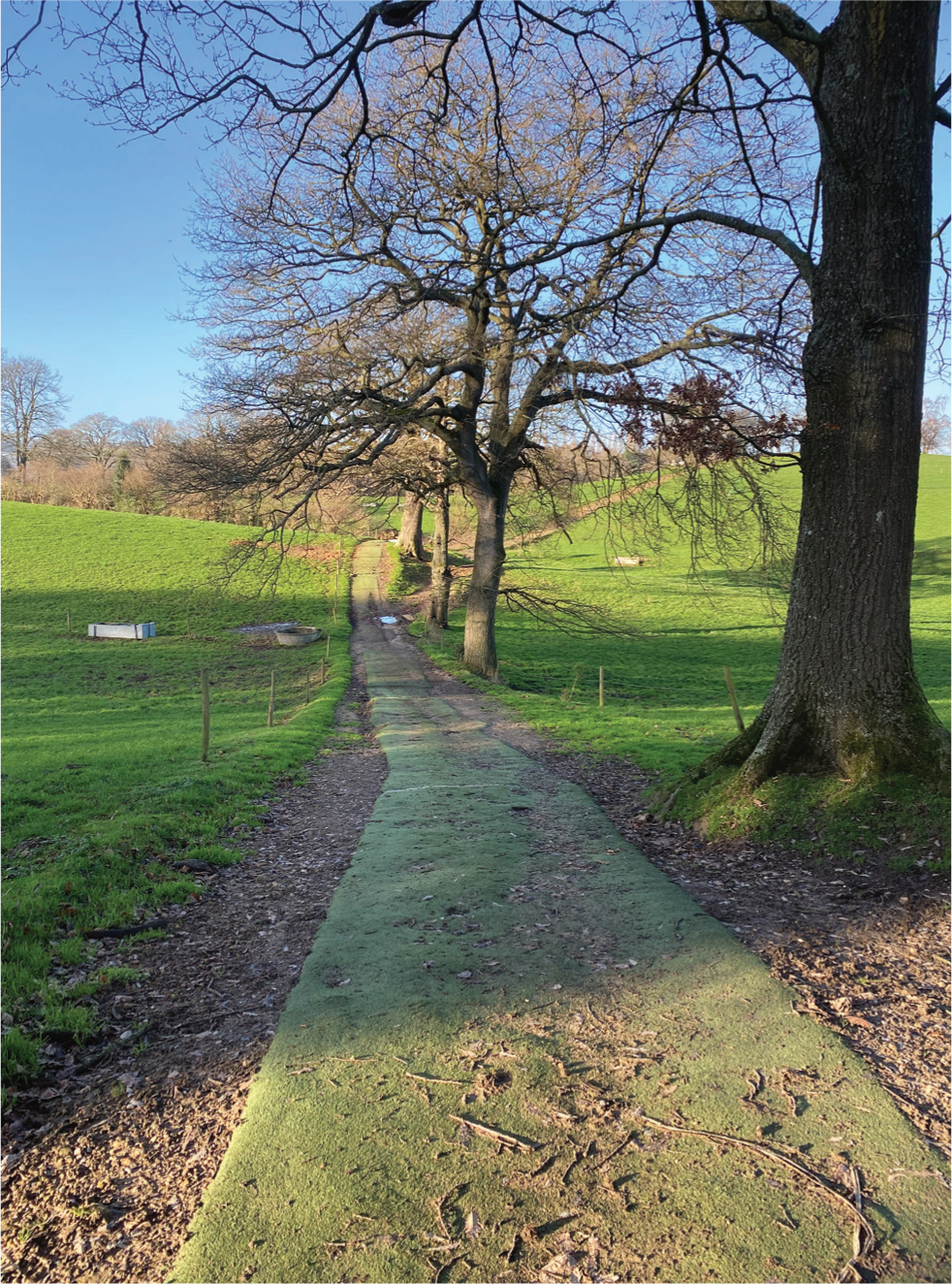
Measuring and monitoring lameness
Methods to measure and monitor lameness are important to identify cows for treatment; to assess current levels of performance; and to track changes over time. Mobility scoring by a trained observer is the predominant method of measuring lameness prevalence in GB presently (Figure 3). Since 2008, this has mainly been using the AHDB four-point mobility scoring system (Afonso et al, 2020). While there are evidently problems with the subjectivity of any locomotion scoring (Whay, 2002), there appear to be additional variabilities dependent on whether scoring is done for management reasons or for audit purposes (Green, 2021).
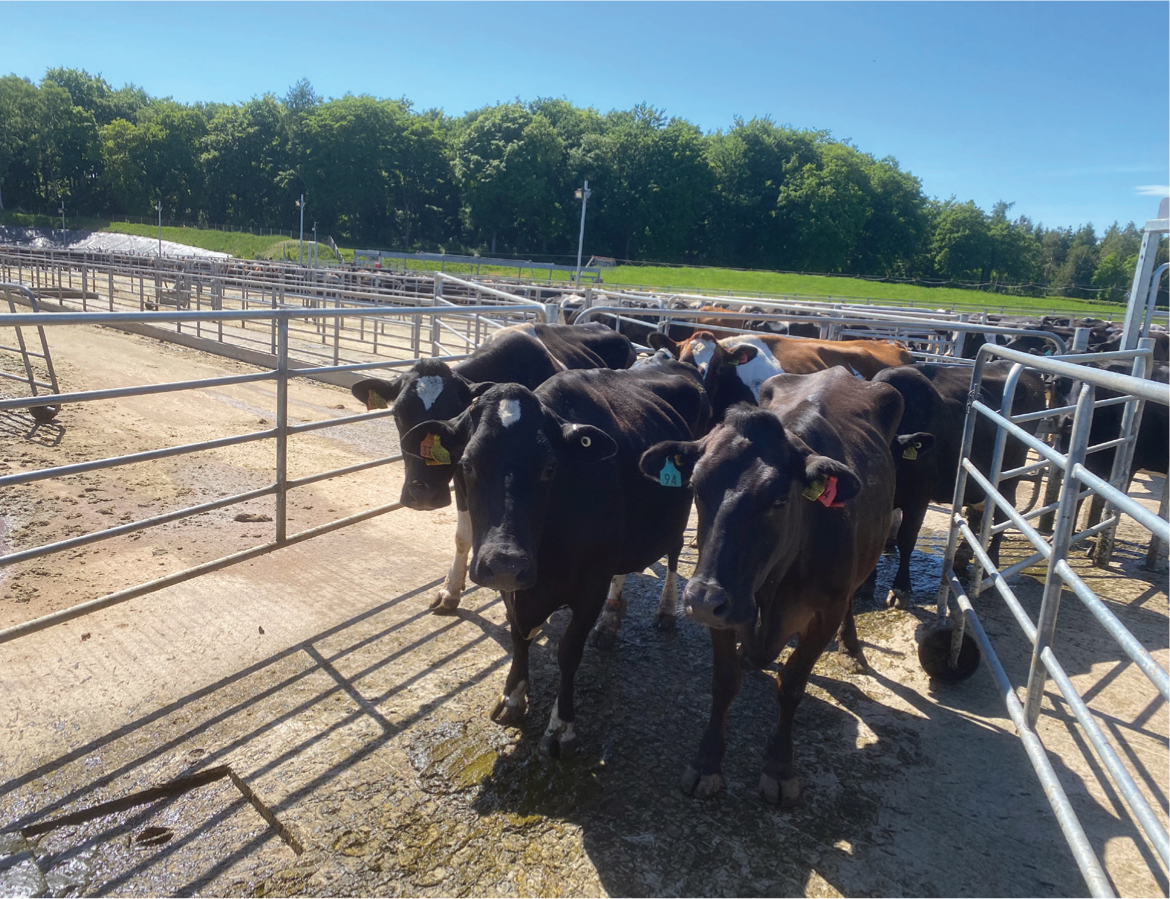
On a positive note, there is probably a greater awareness of lameness prevalence among farmers and veterinary surgeons as a direct result of the AHDB mobility scoring system compared with 15 years ago. This is important because a more accurate appreciation of lameness prevalence has been associated with an increased motivation to implement changes to improve foot health (Main et al, 2012).
The Register of Mobility Scorers (www.roms.org.uk) is a relatively recent initiative to try and improve the consistency of scoring between observers. The register lists approximately 450 trained mobility scorers in GB, and these include veterinary surgeons, veterinary para-professionals, foot trimmers and other people allied to the dairy industry. Each member must first attend an approved 1-day training course before undertaking an online test. They must re-register annually and demonstrate continued competence by passing an online assessment of scoring, using video clips.
Regular independent mobility scoring is important to the Healthy Feet Programme, and it is requisite that the scorer is trained and Register of Mobility Scorers accredited. For many veterinary practices, getting fully on-board with Register of Mobility Scorers mobility scoring has been a valuable first step to become more effective in improving foot health on their clients' farms. An analogy might be that mobility scoring is to lameness management what individual cell counts are to udder health management. The value is in collecting prevalence data, plus being able to identify cows for early treatment.
There is room for improvement within the industry on the issue of measuring lameness prevalence. Williams van Dijk (2020), working with farmer focus groups, reported that one of the frustrations of farmers is that the different farm assurance and retailer-aligned dairy herd health schemes are not consistent in the way mobility scores are conducted, nor do they all require Register of Mobility Scorers accredited scorers. In this sense, they felt that they were not on a level playing field.
The possibility of a reliable and cost-effective automated lameness detection system that can be used widely throughout GB farms remains elusive, yet becomes ever closer. There are three broad systems of note at the moment. One system is the leg-mounted accelerometer, some of which can analyse lying time as well as activity. These have been reviewed recently by O'Leary et al (2020). Thorup et al (2015) described the validation of a UK-developed system, which is commercially available and would appear to have good specificity and sensitivity compared to a human observer, and possibly improved sensitivity of detecting cows with lesions, compared with a human observer. While useful for individual herds, it is unlikely (in the author's opinion) that this method will become widespread among the national herd as a result of the cost.
The second system of note is a fixed camera, which records short video clips of cows walking from above. With the use of artificial intelligence, it is possible to develop algorithms to accurately detect cows showing abnormal mobility. Compared with leg-mounted accelerometers, the system may have greater potential for a more widespread use because of a lower cost of hardware. However, data handling and storage of a high number of large video files may yet prove to be cost prohibitive, even if a proof of concept can be demonstrated.
A third category of system is being investigated for the automated detection of digital dermatitis lesions. Anagnostopoulos et al (2021) described the use of infrared thermography for diagnosis of digital dermatitis lesions. The method, while seemingly successful, has not yet been commercialised, but it is possible to imagine how a relatively low cost system may be installed on a rotary parlour or in an automated milking stall. This could be used for the routine on-farm diagnosis of active digital dermatitis lesions suitable for treatment.
The cost benefit of automated lameness detection is not likely to come from its use for auditing purposes, but by early detection of cows that require treatment. Encouraging early detection and prompt effective treatment (EDPET) is one of the four success factors of the Healthy Feet Programme (Figure 4), and a reliable automated lameness detection system could be a game changer in this regard. It might also change the way that farmers use foot trimmers, with a far more strategic approach targeted at cows that would benefit from trimming, as opposed to routine set-time trims, where it could be argued many cows do not benefit (Figure 5) (Cramer, 2021).
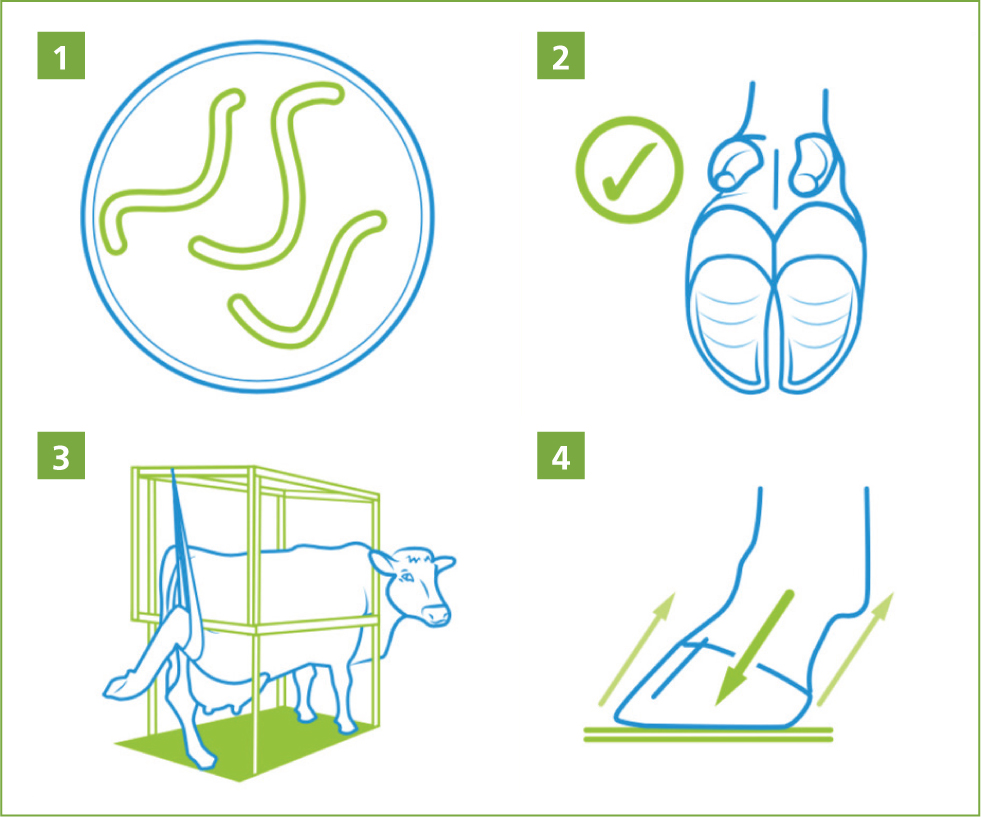
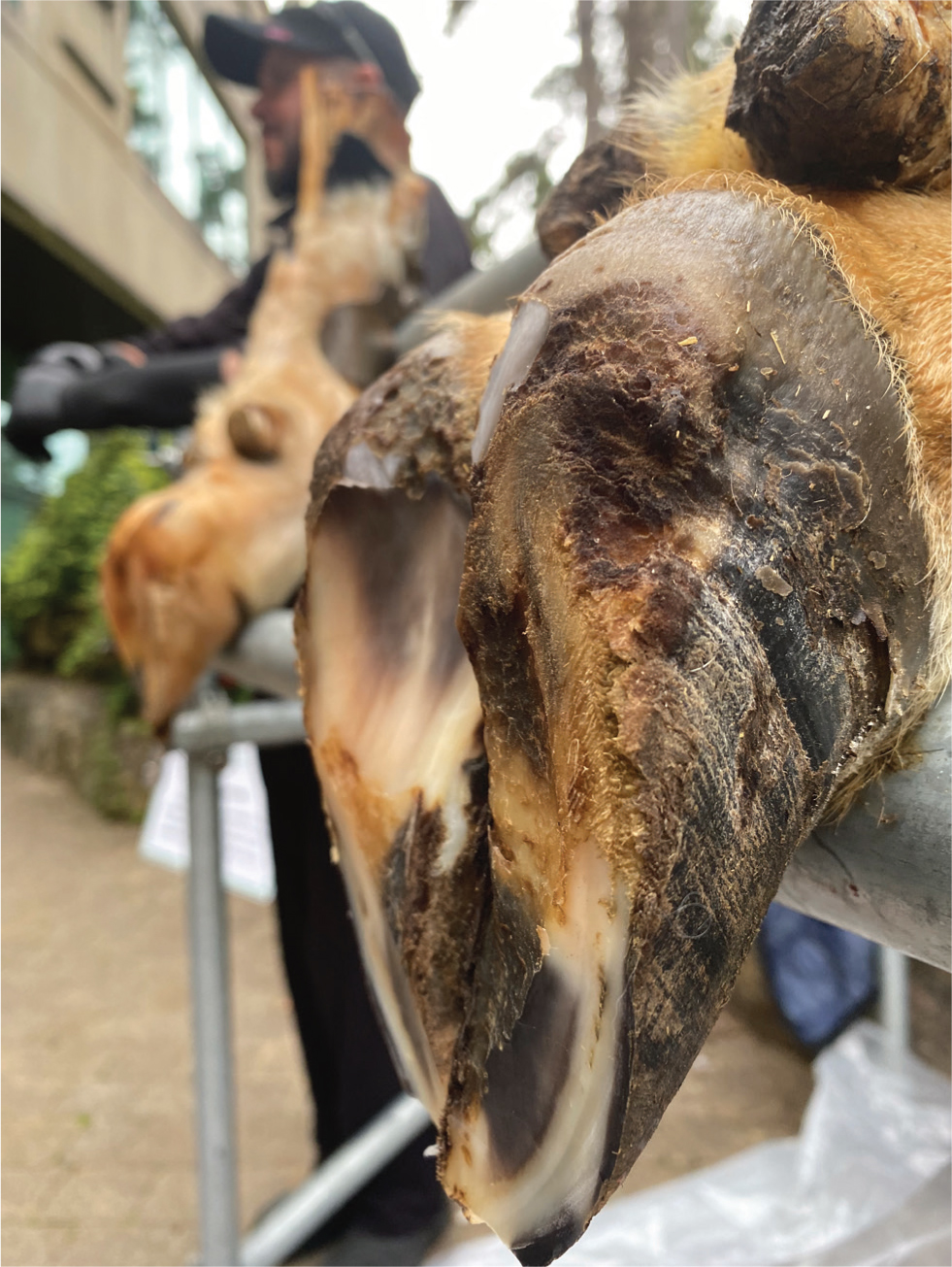
New approaches to treatment
Discussions on foot health should always remain focused on prevention rather than treatment. However, it is worth noting the increasing evidence about the beneficial role that non-steroidal anti-inflammatory drugs (NSAIDs) can play: there would appear to be much we could gain if they are used more frequently in the routine treatment of lameness. Thomas et al (2015) previously reported that NSAIDs improved the treatment success and speed of recovery when used for the treatment of early claw horn lesions (sole bruising and sole ulcers), along with trimming and blocking the non-affected claw. The effect was not seen for cows with chronic claw horn lesions. Newsome (2016) postulated that the main beneficial effect could be as a result of NSAIDs limiting the permanent effects of inflammation on the pedal bone and surrounding soft tissues, which predisposes the cow to repeated episodes of similar lesions. This would further support that the most beneficial time for the use of NSAIDs is very early on, before those permanent changes have occurred.
Very recently, Wilson et al (2021) have discussed their work investigating the use of NSAIDs in the prevention and treatment of lameness, and suggested that the most favourable benefit may be when NSAIDs are administered to heifers routinely at calving. They hypothesised that the systemic inflammation associated with calving may initiate pathological changes to the distal limb anatomy, which predisposes the animal to the onset of claw horn lesions. While not diminishing the importance of pain management, which can be achieved with NSAIDs, they suggested that they should be used proactively as a preventative measure rather than reserved for use at treatment. Their findings support Newsome's theory that once a cow has developed a claw horn lesion, she is forever predis-posed to recurrent bouts of lameness as a result of that index case.
In totally unrelated work, Kasiora et al (2021) reported that the addition of ketoprofen to the treatment of digital dermatitis lesions (using a single topical application of antibiotic spray) improved the treatment outcome, as measured by subsequent mobility scores. The improved treatment outcomes were only for cows that were lame, as opposed to those having visible lesions but not lame, and the lameness reduction extended well beyond the time during which the ketoprofen would exert an analgesic effect. A significant rise in milk production was also found. The work suggested that NSAIDs can have a benefit in terms of welfare and also production efficacy when used as part of the treatment of digital dermatitis.
The role of genetics
The occurrence of claw horn lesions have been linked to the ability of a cow's digital cushion to protect the underlying corium from trauma, probably by dissipating forces exerted on the feet (Bicalho et al, 2009; Newsome et al, 2017). This has been fundamental to the way lameness management has been approached in the past decade, in particular the reduction of claw horn lesions. We now have a greater understanding of the role that low body condition score at calving has, and even other health events such as mastitis, both of which can pre-dispose to sole bruising, sole ulcers and white line disease (Griffiths et al, 2020).
Oikonomou et al (2014) have previously reported that digital cushion thickness is moderately heritable, and that this is strongly correlated with claw horn disruption lesions (i.e. sole bruising, sole ulcers and white line disease). The same researcher has more recently extended his work on the heritability of lameness, using phenotypic data from detailed foot lesion records collected specifically for this purpose. Previously, the unreliability of farmer-collected records has severely impeded veterinary surgeons' ability to determine the heritability of different lesions. We can expect to see some exciting results emerging in this area, with early indications that the heritability of resistance to claw horn lesions (in particular sole bruising and sole ulcers, which are genetically very closely linked) may be in the region of 0.2 to 0.3. To put this in context, this is similar to the heritability of milk yield. Progress in breeding for low lameness traits will be reliant on the availability of consistent and accurate foot lesion records, although in the longer term, advances in genomics could speed up progress.
Conclusions
Foot health is an exciting area to be involved in for dairy veterinary surgeons. We are fortunate in Britain to have some world-leading research and expertise in this area, which is particularly accessible to UK veterinary surgeons. This article only scrapes the surface of the work that has been done recently, and which is ongoing.
Away from new developments in knowledge, the politics of lameness continues to evolve. Now is a good time to make use of the resources available and run with the science to help farmers improve foot health. There is no silver bullet for lameness reduction, and ultimately if we want to see improvements, we have to make changes. The Healthy Feet Programme is the recognised pathway to facilitate those changes and to lower lameness prevalence.
While veterinary surgeons are no longer the people who routinely trim or treat lame cows, they should not feel out of the loop of foot health management. There are many skills and insights they can bring to the table, and they are integral to a team approach to reduce lameness in dairy herds.
KEY POINTS
- Approximately 30% of British adult dairy cows show lameness to some degree, which is usually associated with a hoof lesion.
- Early detection, prompt effective treatment (EDPET) is one of the four success factors in the Healthy Feet Programme.
- Mobility scoring is an invaluable tool to detect cows with lesions early on. For most farms, this is the most practical way of ensuring EDPET can be achieved.
- Non-steroidal anti-inflammatory drugs (NSAIDs) are increasingly found to be valuable in the treatment of early lameness cases.
- Lameness is a complex issue and there is not a one-sized-fits-all solution. The Healthy Feet Programme is an evidenced-based and logical approach for veterinary surgeons to work with farmers to improve foot health, and by taking into account all the relevant farm-specific factors.


